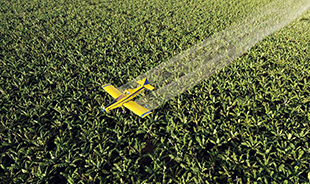Analysis of contaminants

"Contaminant" denotes any substance which is not intentionally added to food and which is present in that food as a result of production (including farming, livestock and veterinary operations), manufacturing, processing, preparation, treatment, packaging, transport or holding such food or as a result of environmental pollution. This definition does not include foreign substances such as pieces of insects, animal hair and similar.
Contaminants, depending on their source, can be divided into 3 basic groups:
1. Natural contaminants, such as mycotoxins originating from molds and enterotoxins from bacterium,
2. Environmental contaminants, such as dioxins, polycyclic biphenyls, polycyclic aromatic hydrocarbons, heavy metals,
3. Food processing contaminants, such as chlorpropanols, acrylamide, cleaning agent residues.
Many ingredients in the food industry contain chemicals, which, due to their toxicity, if consumed in large quantities, can cause health problems. Chemical and physical agents that may be introduced into or associated with food may be controlled by monitoring environmental conditions and the quality of input materials, and by national or international legislation defining maximum limits.
Consumer safety comes first, and maximum limits are usually set at approximately 100 times less than the established value of toxicity. Maximum limits are set only if they can be proven (analyzed). Therefore, in order to protect consumers, manufacturers are obliged to develop and implement appropriate quality monitoring systems, which will be able to meet the basic and specific requirements of consumer safety.
On the other hand, the law requires food control according to the listed chemical and physical hazards in terms of control of maximum permitted quantities by regulations mandatory in application in both the EU and in the Republic of Croatia, which you can get in our laboratory:
– Regulation (EC) No 396/2005 (OJ L 70 of 16.03.2005) on maximum pesticide residue levels in and on food and feed of plant and animal origin, including all amendments.
– Commission Regulation (EC) No 1881/2006 on determining the maximum levels for contaminants in foodstuffs (OJ L 364, 201.12.2006), including all amendments.
– EC Regulation 1333/2008 on food additives (OJ 354 of 31.12.2010) including all amendments.
Some of the most commonly analyzed contaminants are mycotoxins, heavy metals, and pesticides.
Mycotoxins are secondary metabolites of molds and as such are toxic. Several hundred mycotoxins are known. Due to their ability to occur in raw as well as in processed raw materials, they represent a great danger to human health as well as a significant economic factor, ie economic loss if they occur in raw materials.
We can perform following analyzes for mycotoxins:
- aflatoxin B1 and the sum of aflatoxins B1, B2, G1 and G2 and M1
- ochratoxin A
- deoxynivalenol
- zearalenone
- fumonisin (sum of fumonisins B1 and B2)
- patulin
- T-2 and HT-2 toxin (recommendation)
We can perform following analyzes for heavy metals for which permitted maximum levels are prescribed according to EU Regulation no. 1881/2006:
- Lead
- Cadmium
- Alive
- Tin
- Arsenic
Lead is usually analyzed in milk, infant formulas and transitional foods, meat, fish, cephalopods, shellfish, shellfish, cereals, vegetables, mushrooms, fruits, fats and oils, fruit juices, wine.
Cadmium is found in vegetables and fruits, mushrooms, cereals, soy, chocolate products, meat, fish, cephalopods, shellfish, initial and transitional foods for infants, and in dietary supplements.
Mercury is usually analyzed in fish and fish products.
Tin is usually determined in food that is packed in tin packaging (canned food).
Arsenic is usually determined in rice and rice products.
In addition to these metals, we are able to determine other metals and non-metals such as: iron, sodium, potassium, calcium, zinc, magnesium, manganese and others.
Pesticides, ie plant protection products, are products of chemical or biological origin intended for the protection of plants against various diseases, weeds, pests and the like.
In recent years, especially since the Republic of Croatia has become a full member of the European Union, the control of food and feed has been strengthened and the number of laboratory analyses for pesticide residues has increased significantly.
Pesticide residues are analyzed using multiple mass spectrometry combined with gas and liquid chromatography.